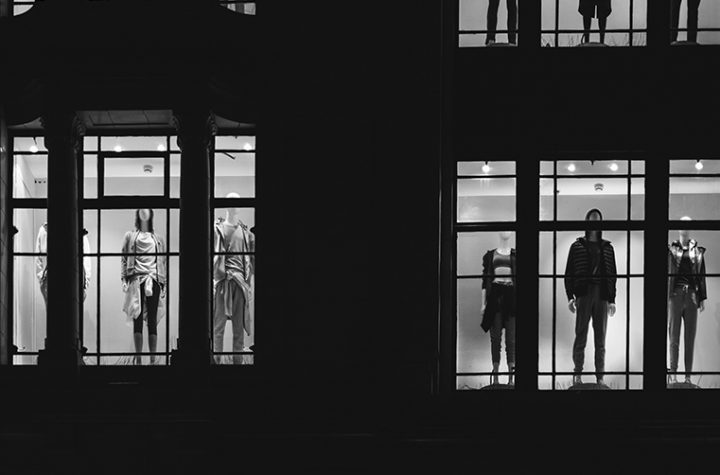
- Boeing is refusing to cooperate in Dutch lawmakers investigation into a 2009 crash.
- The new inquiry accuses Boeing of putting pressure on investigators to downplay its role in the crash.
- The lack of transparency could have contributed to Boeings MAX mistakes a decade later.
It looks like the pain isnt over yet for Boeing (NYSE:BA), whose 737 MAX is still grounded after two crashes revealed a shocking disregard for safety embedded in the firms corporate culture. But an investigation into a 2009 Turkish Airlines crash suggests that the writing may have been on the wall a decade ago.
New Investigation into Boeing
Dutch lawmakers are re-examining a 2009 accident involving a Boeing 737 NG that killed nine people near Amsterdam. They say the crash draws striking parallels to that of the MAX and that the results from the original investigation downplayed Boeings design shortcomings that contributed to the crash.
Boeings safety culture is being called into question again as Dutch officials reopen a 2009 air crash investigation. | Image: ERIC PIERMONT / AFP
On Thursday both Boeing and the National Transportation Safety Board refused to participate in the new investigation, saying that the original inquiry was thorough and complete. But Dutch officials say Boeing has a lot to answer for.
Boeing Crash Explained
Back in 2009, a Turkish Airlines jet crashed after a single malfunctioning sensor caused the flight computer to reduce thrust to idle. That made the speed drop dramatically and ultimately stalled the aircraft.
Following the crash, airlines were required to update their software to compare data from two sensors to help prevent this problem. Boeing had reportedly developed the update for some 737 models before the Turkish Airlines plane went down, but had determined that pilots would be able to detect a failed sensor and correct the error.
Pilot error was ultimately the cause of the crash but Boeings design flaws were downplayed. | Image: REUTERS / Juan Medina
The crash was attributed to pilot error but some safety experts say Boeings role in the ordeal wasnt clearly communicated. While Dutch investigators initially pointed to design issues with the plane, Americans overseeing the report objected saying that pilot error should be underscored as the main cause.
The Lost Study
Aviation safety expert Sidney Dekker, who was commissioned by the Dutch Safety Board to review the incident back in 2009, said Boeings role in the ordeal was significant.
Dekker pointed out that the FAA Human Factors team had recommended that pilots should be given interim guidance to warn them of possible issues. But the FAAs recommendations werent found in the training material given to the Turkish Airlines crew.
From the official incident report:
Dekkers study also criticized Boeings response to the crash; to warn crews about fundamentals like flying the aircraft, monitoring airspeed, [and] monitoring altitude. He concluded that, The only defense against a designed-in single-failure path, in other words, are the pilots who are warned to mistrust their machine and to stare at it harder.
The findings of Dekkers study werent clearly represented in the final review of the Turkish Airlines accident. According to the New York Times, Dutch officials were pressured to downplay Boeings role by safety officials and representatives from Boeing itself.
Were There MAX Parallels?
To be sure, pilot error was the overarching cause of the accident. A training captain at one of Europes largest airlines told CCN.com there was no question the pilots were to blame.:
The thrust levers were at idol for something like 100 seconds. At that point in flight, the pilots should be monitoring that at all times. They should have seen it, and corrected it, instantly. The radio altimeter failure was part of it but things can always go wrong, thats what pilots are trained to deal with.
Still, the question remains whether more transparency in the 2009 crash investigation could have prevented what happened with the MAX in 2019. In both cases, a design flaw that the company was aware of ended in tragedy.
But the captain we spoke to said the two instances arent that simple to compare:
You cant compare what happened with the MAX to what happened in 2009. [In 2009] the pilots didnt notice, or try to correct a system error. With the MAX, the pilots noticed the system error and tried to recover the aircraft. But [in the case of the MAX] the aircraft system would command against their inputs.
Even if what happened in 2009 is found to have no bearing on the MAX crashes, this investigation will probably be damaging to Boeing. Not only does it call the firms design capabilities into question, but it suggests that Boeing was unwilling to accept its shortcomings and learn from them to prevent future accidents.
Boeings refusal to cooperate could delay the MAXs return to the skies. | Image: AP Photo / Richard Drew
Plus, part of Boeings push to get the MAX planes operational again means gaining trust among regulators around the world. By refusing to participate in this investigation, Boeing may struggle to gain approval from European lawmakers for the MAX. At very least, the Dutch inquiry could push the MAXs approval back even further.
This article was edited by Sam Bourgi.
Last modified: February 7, 2020 12:15 AM UTC




More Stories
“Nobody is the reason for my death. My family is having to bear a lot of expenses because of me. I am a burden to them, my education is a burden to them….” A day after she wrote this note, Aishwarya Reddy, a student at Lady Shri Ram College for Women in Delhi…
Tom Brady’s arrival had the Buccaneers dreaming of an NFC South title, but the Saints showed the QB and his team they’re a far from being a contender.
Barnaby Joyce claims he told Malcolm Turnbull ‘others’ were having affairs